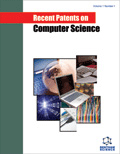
Abstract
Background: Time synchronization between the sensor nodes to reduce average end to end delay with the increase in number of sensor nodes in a network for critical and real time data monitoring can be achieved by precisely predicting their wakeup/sleep timings and are of prime importance as described in recent patents. The idea evolves as a reduction in duty cycle and precise time scheduling of active/sleep cycles of the sensors to reduce the probability of collisions between data and control packets which prolongs the network lifetime and reduces the average end to end delay. The multihop transmissions are not always attractive in underwater communication due to high losses. The proposed Slotted Cyclic Quorum with Influence nodes (SCQI) medium access control protocol is capable of continuous monitoring of critical underwater events in a very effective manner in multihop transmission networks. This work is an attempt to mitigate multihop hidden terminal and to reduce the probability of collisions between data and control packets.
Methods: The mathematical model for the path loss due to attenuation of electromagnetic wave propagation in the sea water is explained. The three path reflection model evaluating reflection loss from the air-water and water-sand interfaces as a function of distance between sensors and water depth is introduced. It is assumed that the sensors are properly anchored to limit their movement due to waves within the permissible limits to follow the proposed cyclic quorum based medium access control protocol. The fundamentals of cyclic quorum with a slotted scheme along with the influence nodes are elaborated. This paper attempts to utilize electromagnetic waves at resonance frequency of 2.4 GHz for underwater communication. The main advantages of using electromagnetic waves instead of acoustic waves are that it reduces the latency due to faster propagation speed and give a high data rate due to high frequency of the wave at the cost of reduction in communication range.
Results: The results verify that the implementation of cyclic quorum based medium access control (CQ) protocol, slotted cyclic quorum based medium access control (SCQ) protocol and slotted cyclic quorum based medium access control with influence nodes (SCQI) protocol has significantly reduced the average end to end delay with the increase in number of sensor nodes and also prolongs the network lifetime making it appropriate for critical and real time data monitoring.
Conclusion: This work proves the suitability of electromagnetic waves as an effective alternative for underwater wireless communication. The main objective is to optimize the network lifetime and to reduce the average end to end delay by implementing cyclic quorum based medium access control protocol in underwater wireless sensor networks and to draw the attention of researchers in this area.
Keywords: Underwater wireless sensor network (UWSN), slotted cyclic quorum, influence nodes, underwater electromagnetic wave communication, 2.4 GHz, multihop hidden terminal, collisions.
Graphical Abstract
 9
9 2
2 1
1 1
1













